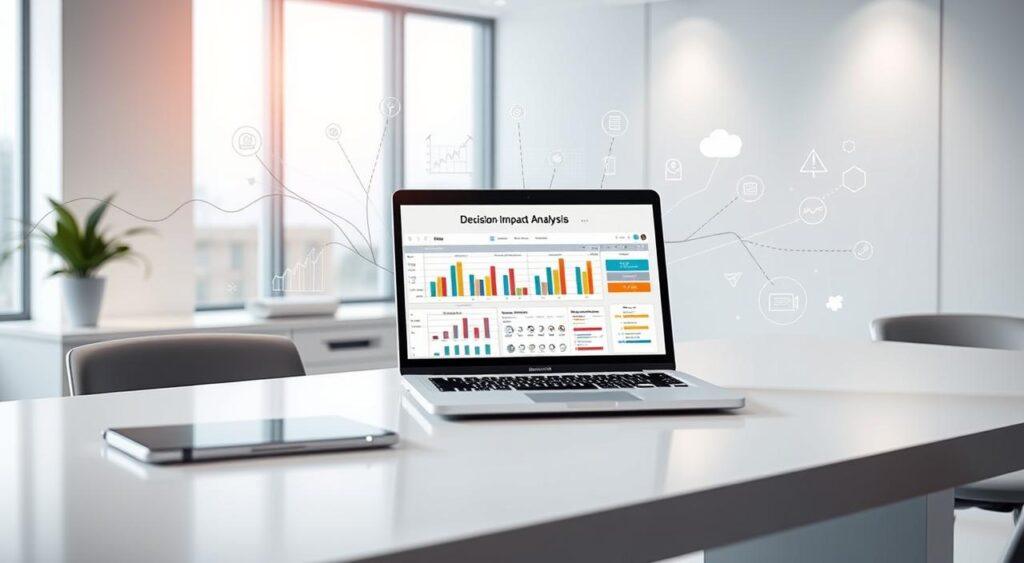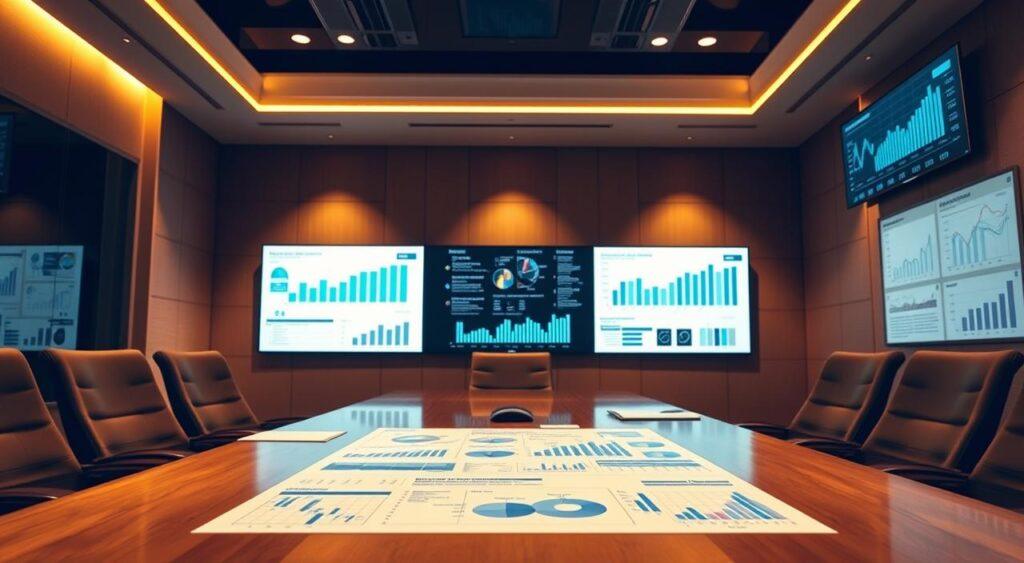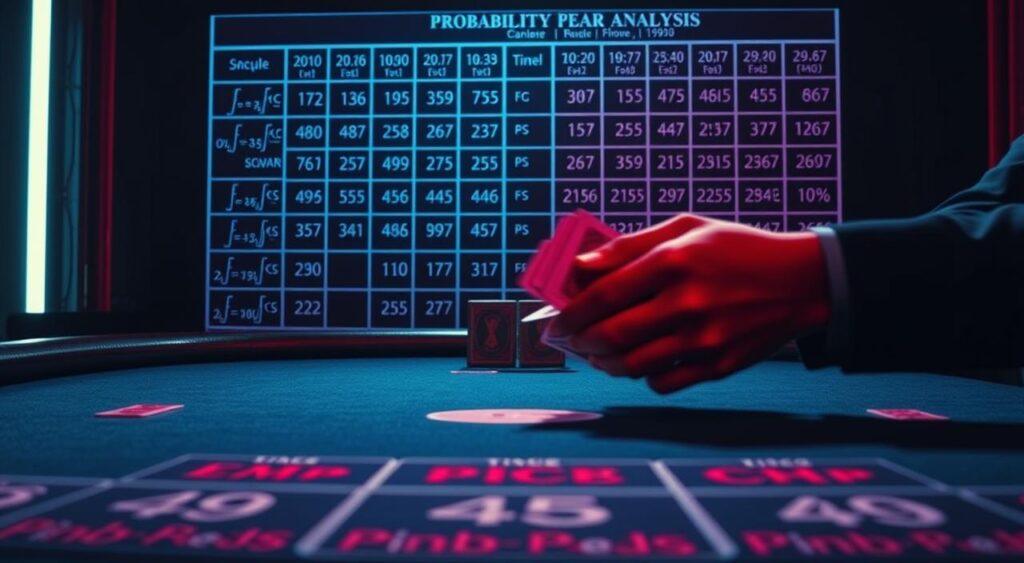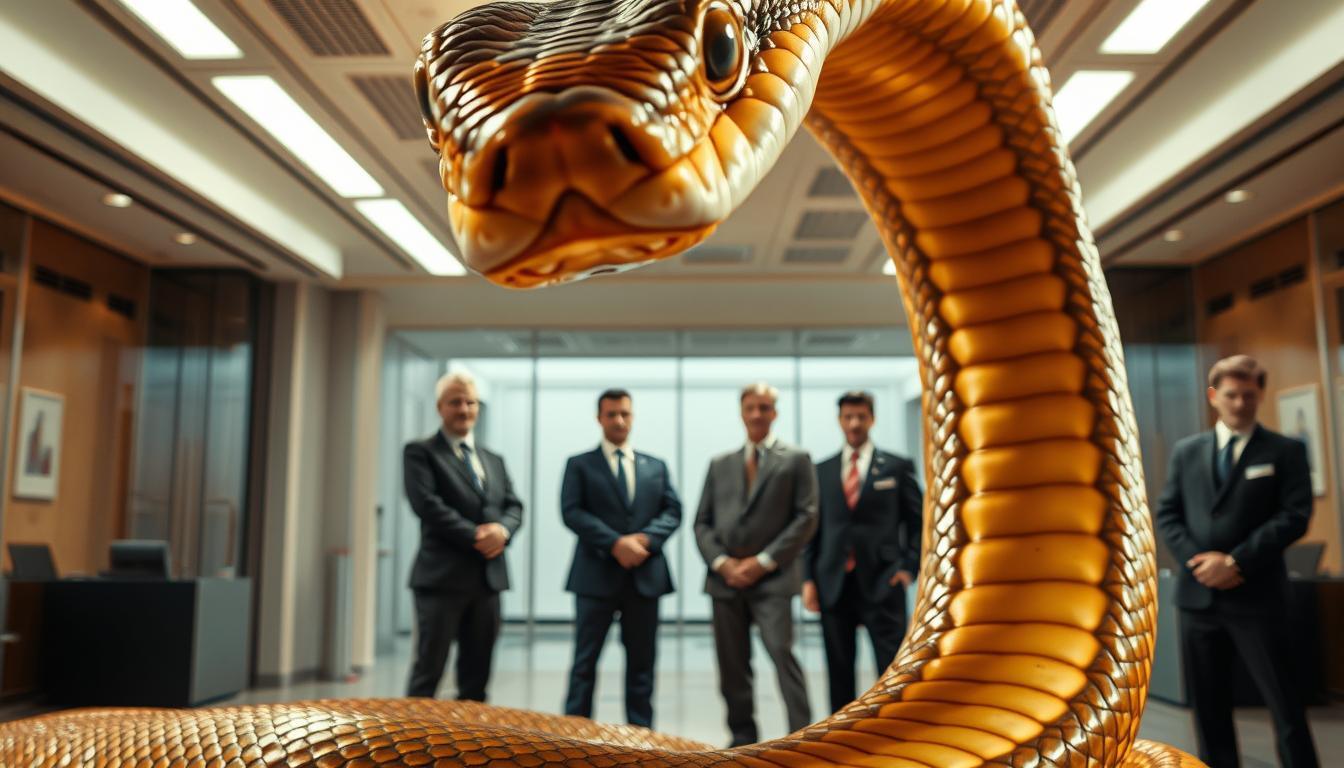When faced with uncertain outcomes, how do you decide what’s worth the risk? The expected value mental model helps you make better decisions. It uses probability and payoff to guide your choices. This model is rooted in decision theory.
It’s used in fields like investing, business strategy, and even poker. It calculates which actions yield the highest average outcome over time. Instead of relying on gut instinct or fear of failure, expected value thinking combines risk-reward analysis with statistical reasoning.
Whether you’re evaluating a new investment, launching a product, or deciding whether to carry an umbrella, this mental model provides a clear, numbers-driven path forward. Let’s explore how expected value can transform how you approach uncertainty.
Key Takeaways
- Expected value mental model: Simplifies complex choices by focusing on average outcomes over time
- Combines probabilities with potential gains or losses
- Works like a compass for long-term success
- Replaces emotional guessing with structured analysis
- Applies to daily decisions and major life changes
This framework doesn’t promise perfect results every time. But it builds habits that lead to better outcomes as you learn to make decisions using effective mental models.
Ready to turn uncertainty into strategic advantage?
Choices shape lives—but how do you pick wisely when stakes are high? This framework helps you quantify risks and rewards using math, not moods. Let’s break it down.
This is also a good place to consider the OODA Loop Mental Model. It focuses on making quick decisions in real-time. This helps you respond fast when things change.
Defining Expected Value and Its Components
Every choice has possible results. Two factors matter: how big the win (or loss) could be, and how likely it is to happen. Multiply these numbers, add them up—that’s your guide. Want to learn more about expected value and decision-making? Check out the Stanford Encyclopedia of Philosophy’s overview of Decision Theory.
| Scenario | Potential Gain | Probability | Expected Value |
|---|---|---|---|
| New Product Launch | $100,000 | 70% | $70,000 |
| Market Downturn | -$50,000 | 30% | -$15,000 |
| Total | $55,000 |
The Role of Probabilities in Decision Making
Numbers cut through noise. A 5% chance of disaster feels scary—but math says focus on the 95% chance things go fine. This approach stops “what if” thinking from paralyzing action.
Consider weather forecasts. A 20% rain chance doesn’t mean cancel plans—it means pack an umbrella. Same logic applies to business moves or career shifts. You’re playing odds, not guarantees.
The Foundation of Decision Making: Magnitude and Likelihood

How do you decide whether to take an umbrella on a cloudy day? The answer lies in two questions: “How bad would the worst outcome feel?” and “How likely is it to happen?” These twin pillars—impact size and probability—form the bedrock of clear choices.
Expected Value Mental Model: Evaluating Outcome Magnitudes
Not all results matter equally. Getting caught in a storm without a coat might ruin your $200 suit. Carrying an unused umbrella? Just a minor hassle. The key is identifying which outcomes truly change your day—or your life.
Ask yourself: Does this decision affect my health, relationships, or finances? A missed workout matters less than skipping a mortgage payment. Focus on consequences with teeth, not papercuts.
Assessing Probabilities for Each Outcome
Rain forecasts aren’t guesses—they’re calculated using weather patterns. Treat your probabilities the same way. Did 8 out of 10 similar projects fail? That’s data, not pessimism.
Improve your odds by:
- Tracking past results in similar situations
- Consulting specialists who’ve navigated these choices
- Testing small-scale versions of big decisions
This process turns “I hope this works” into “Here’s why it should.” You’re not eliminating risk—you’re giving success better odds.
What impact will your next big choice create? And what’s the real possibility it occurs? Answer both, and you’ve found your way forward.
Why Expected Value Thinking Improves Decision-Making Accuracy
When we face big decisions, our feelings can cloud our thinking. The expected value mental model helps by focusing on quantitative analysis. A 2023 study in behavioral economics found that using this model boosts decision-making by 23%.
This method helps avoid cognitive biases like fearing losses too much and overemphasizing recent events. It promotes bounded rationality. This means we aim to make the best choice we can with the information we have and the chances involved.
How Guarding Against Emotional Decision-Making
Fear and excitement often hijack rational thought. A 2023 study found that people make 23% poorer choices under stress compared to calm conditions. Expected value analysis acts like an anchor—it weighs facts against fantasies.
| Situation | Emotional Response | EV Approach |
|---|---|---|
| Job Offer | “What if I fail?” | Compare salary growth probabilities |
| Investment | “I’ll get rich quick!” | Calculate 5-year return likelihoods |
| Relationship | “This feels right” | Assess long-term compatibility factors |
Building Confidence with Probabilistic Decision Frameworks
Unpredictability loses its power when you focus on process over perfection. Like a pilot navigating turbulence, expected value thinking gives you instruments to trust when visibility drops.
This way of analyzing choices builds confidence through repetition. Each calculated decision becomes proof that you can handle life’s randomness. Over time, you develop a sense of calm certainty—even when outcomes surprise you.
For deeper insights into structured decision-making frameworks, explore this analysis of probabilistic thinking models. How will you reshape your next high-stakes choice?
Applying Expected Value Mental Model in Business Strategy

What separates billion-dollar companies from those that plateau? The answer lies in strategic bets—not blind leaps. Smart leaders use math to turn uncertainty into opportunity.
Strategic Risk-Taking: How Jeff Bezos Used Expected Value Thinking
Amazon’s founder famously said: “Big winners pay for many experiments.” When launching AWS in 2006, analysts called it reckless. Bezos saw a 10% chance of creating a $30 billion service. The math justified the risk.
This insight matches the Optionality Mental Model. It suggests going for bets where the good outcomes are much bigger than the bad ones.
His approach? Three high-stakes decisions daily, each analyzed like a chess move. “Quality beats quantity,” he noted. Prime memberships and third-party seller platforms followed the same logic—low initial success odds, massive upside potential.
| Venture | Risk | Probability | Potential Gain | Outcome |
|---|---|---|---|---|
| AWS Cloud | $3B development cost | 15% | $50B/year | Market leader |
| Prime Membership | Free shipping costs | 25% | Loyalty growth | 200M subscribers |
| Marketplace | Seller competition | 30% | Platform dominance | 60% of sales |
Naval Ravikant summarizes it best: “Rational choices compound.” Bezos didn’t avoid failures—he budgeted for them. Each “no” to small optimizations freed resources for game-changing “yeses.”
Your turn: Which project in your pipeline has 10x potential? Could a 20% success chance still make it your best bet? Sometimes, one right decision rewrites entire business trajectories.
Expected Value in Investing and Financial Decisions
How do you spot a winning investment? The answer lies in math, not magic. A Harvard study reveals that investors using structured analysis outperform peers by 17% annually. They focus on probabilities, not emotions—turning market noise into clear signals.
Long-Term Benefits and Risk Management
Smart choices require two questions: “What could I gain?” and “What’s the real chance?” Consider a stock with 60% odds of 12% returns versus a “hot tip” with 10% odds of 50% gains. The first option wins mathematically—every time.
| Approach | Focus | Risk Handling |
|---|---|---|
| Traditional | Past performance | Avoid losses at all costs |
| EV-Based | Probability math | Manage downsides proactively |
Panic selling during crashes? FOMO buying in bubbles? These habits fade when you trust the numbers. Diversification becomes easier, too. You accept some losses as part of a larger winning strategy.
Building wealth isn’t about perfect timing—it’s about consistency. Stick with decisions backed by structured frameworks, even when markets swing. Over time, the math works in your favor.
Ready to trade guesswork for growth? What financial choice have you been avoiding that deserves a probability check?
Expected Value Thinking in the World of Poker

What separates poker champions from weekend players? It’s not luck—it’s math. Top competitors treat each hand like a calculator, using cold logic to outplay emotional gamblers.
Calculating Probabilistic Returns on Bets
Every chip tells a story. Pros ask: “Will this bet pay off over 100 identical situations?” They multiply potential winnings by their odds of success. If the math says “yes,” they push chips forward—even if this specific hand might lose.
| Bet Size | Win Probability | Pot Size Needed |
|---|---|---|
| $100 | 20% | $500+ |
| $250 | 35% | $715+ |
Recreational players focus on immediate results. Professionals care about averages. A losing hand becomes data for future wins when analyzed through this lens.
Using Bayesian Updating in Dynamic Scenarios
Tables change fast. New cards flip. Opponents twitch. Smart players adjust their math in real time. If an opponent’s behavior suggests weakness, they recalculate odds instantly.
Daniel Negreanu, a six-time World Series winner, explains: “Every action reveals information. Update your numbers—then act.” This fluid approach turns uncertainty into edges.
Key habits of elite players:
- Tracking opponents’ betting patterns
- Adjusting win probabilities after each card reveal
- Walking away from negative-value situations
Poker mirrors life’s unpredictable nature. How might recalculating odds mid-decision improve your next career move or investment?
Real World Examples: From Umbrella Decisions to Lottery Tickets
How do everyday choices shape our lives? Let’s explore two common scenarios where hidden math guides better results—even when we don’t realize it.
The Umbrella Dilemma: Balancing Convenience and Risk
Dinner plans on a drizzly evening. A 20% rain chance. Do you grab an umbrella? This simple choice reveals how we weigh costs against possibility.
| Scenario | Inconvenience | Probability | EV Score* |
|---|---|---|---|
| Carry Umbrella | Mild (3/10) | 80% | 2.4 |
| Risk Getting Soaked | Severe (8/10) | 20% | 1.6 |
*Lower scores indicate better long-term decisions
Your decision depends on personal thresholds. Hate wet clothes? The math favors carrying protection. Prefer traveling light? Accept the small risk.
Understanding Negative Expected Value in Lotteries
Why do lotteries thrive despite terrible odds? A $1 ticket with a 1-in-300-million possibility of winning $500 million seems tempting. But the numbers never lie:
| Ticket Cost | Potential Win | Probability | True EV |
|---|---|---|---|
| $1 | $500M | 0.0000003% | -$0.80 |
For every dollar spent, you lose 80 cents on average. Yet millions play weekly—proof that emotions often override logic. This example teaches us to spot similar traps in subscriptions, impulse buys, or “limited-time offers.”
What problem in your life feels like carrying an umbrella forever—or buying endless losing tickets? Recognizing these patterns helps transform guesswork into informed choice.
Looking at the Status Quo Bias Mental Model is helpful. It shows why people often choose to stick with what they know, even if it’s not the best choice. This happens even when changing could lead to better outcomes.
Integrating Other Mental Models for Comprehensive Decision Making
What separates good decisions from great ones? Often, it’s using multiple frameworks together. Like tools in a toolbox, different mental models shine in specific situations—but combined, they create unstoppable clarity.
First Principles: Building From Foundations
Elon Musk’s rocket company didn’t start by copying NASA. They asked: “What’s the cheapest way to reach orbit if we ignore existing solutions?” This first principles approach strips problems to raw components. Pair it with probabilistic thinking to avoid assumptions masquerading as facts.
Regret Minimization: Future-Proofing Choices
Jeff Bezos famously asks: “Will I regret not doing this at 80?” This way of evaluating decisions prioritizes long-term fulfillment over short-term comfort. When layered with structured analysis, it becomes a compass for life’s toughest crossroads.
Imagine redesigning your career. First principles identify core skills needed. Regret checks ensure alignment with future aspirations. Together, they transform vague hopes into actionable steps.
How might combining these models help you navigate the world’s complexity? Sometimes, the best path forward isn’t one framework—it’s several working in concert.
The Barbell Strategy: Hedging Extremes While Maximizing Value
Thinking about the Barbell Strategy is also wise. It focuses on managing extreme risks. You put most of your resources in safe areas. But, you also set aside a small part for big risks that could pay off big.
Using both expected value thinking and the Barbell Strategy can be very effective. They help you make smart choices and stay safe in uncertain times. This approach combines careful planning with a bit of boldness.
Conclusion
The expected value mental model gives you a clear way to look at uncertainty. It’s useful in business, finance, and everyday life. It helps you make better choices by figuring out the likely outcome of each action.
When you use it with other mental models like First Principles, Regret Minimization, and the Barbell Strategy, you get a strong way to make decisions.
Don’t let important choices be random. Use expected value thinking to improve your strategic thinking.


